Conan (Sprague de Camp Fan): Two Conan pastiches in the same year? And 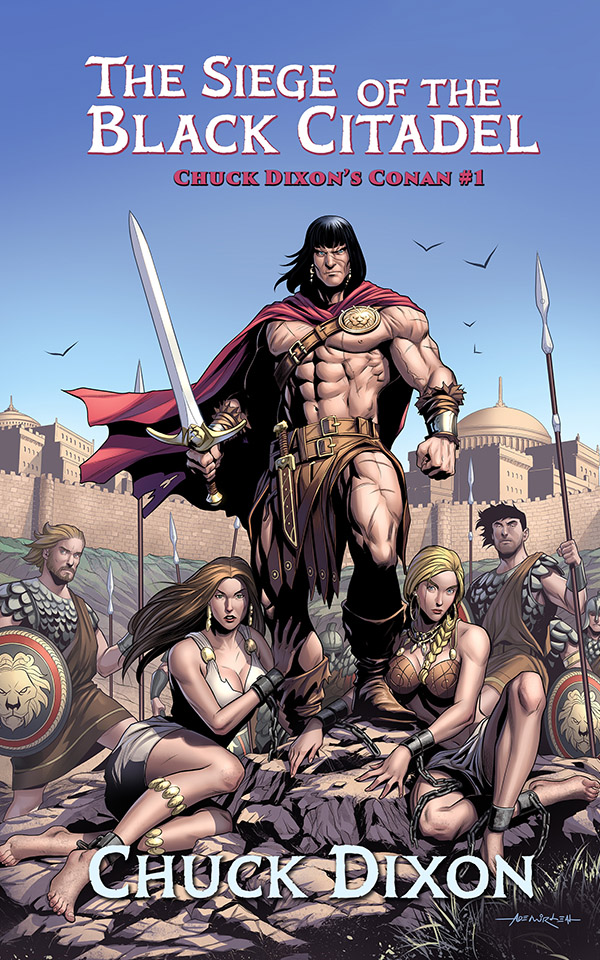 a third on the way? Are we in a Conan renaissance? I honestly don’t think so. Titan Books is taking a chance on Conan most likely in hopes of the long-promised Conan Netflix series. If that happens a renaissance could occur but right now, I think we just have hope and opportunism.
a third on the way? Are we in a Conan renaissance? I honestly don’t think so. Titan Books is taking a chance on Conan most likely in hopes of the long-promised Conan Netflix series. If that happens a renaissance could occur but right now, I think we just have hope and opportunism.
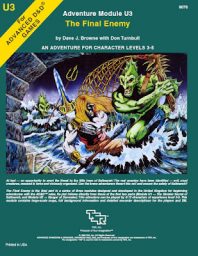 D&D (Grognardia): Published in 1983, The Final Enemy is the conclusion of the trilogy of AD&D adventure modules that began with The Sinister Secret of Saltmarsh and continued in Danger at Dunwater. Like both its predecessors, module U3 was written by Dave J. Browne with assistance from Don Turnbull.
D&D (Grognardia): Published in 1983, The Final Enemy is the conclusion of the trilogy of AD&D adventure modules that began with The Sinister Secret of Saltmarsh and continued in Danger at Dunwater. Like both its predecessors, module U3 was written by Dave J. Browne with assistance from Don Turnbull.
Fantasy (Paperback Warrior): Like a lot of the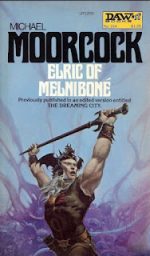 critically praised books we review here at Paperback Warrior, Elric of Melnibone can lead anyone down their own rabbit hole researching the novel, series, and grand mythos associated with the character. Elric first appeared in Michael Moorcock’s novella “The Dreaming City”, published in Science Fantasy in June, 1961. More Elric stories and novellas were published through the early to mid-1960s in Science Fantasy.
critically praised books we review here at Paperback Warrior, Elric of Melnibone can lead anyone down their own rabbit hole researching the novel, series, and grand mythos associated with the character. Elric first appeared in Michael Moorcock’s novella “The Dreaming City”, published in Science Fantasy in June, 1961. More Elric stories and novellas were published through the early to mid-1960s in Science Fantasy.
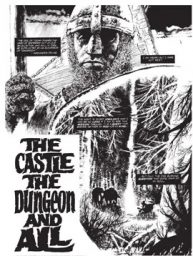 Comic Books (Dark Worlds Quarterly): Change is in the air. Sword & Sorcery, that most cherished of things in the early 1970s, has become old-hat. Don’t believe me? Consider the number of Sword & Sorcery covers on Warren’s three magazines? Only one in eleven issues. Even the number of S&S stories is down, 11 from 17 the year before. “El Cid: Demon’s Treasure” is the last of that series. There would be no more gorgeous Dak/El Cid type series. Merlin shows up one time but the old days of Esteban and Dax are behind us.
Comic Books (Dark Worlds Quarterly): Change is in the air. Sword & Sorcery, that most cherished of things in the early 1970s, has become old-hat. Don’t believe me? Consider the number of Sword & Sorcery covers on Warren’s three magazines? Only one in eleven issues. Even the number of S&S stories is down, 11 from 17 the year before. “El Cid: Demon’s Treasure” is the last of that series. There would be no more gorgeous Dak/El Cid type series. Merlin shows up one time but the old days of Esteban and Dax are behind us.
Writing (DMR Books): Great images and stories are something akin to magic. Like lightning from a clear sky, they stun us with their beauty and power. And they inspire subsequent artists to create, spawning genres and subgenres. Wholly original art is not only exceedingly rare but may not actually exist. Most art is derivative, original only by matter of degree. And that’s not a bad thing. Until the computers started doing it. Before we get to the latest seismic shock impacting publishing and associated creative professions, we need to talk about how art is made.
Robert E. Howard (Pulp Super-Fan): Most are aware of Robert E. Howard‘s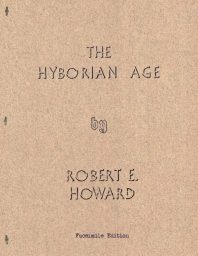 character Conan the Barbarian, as he has appeared in numerous stories by REH, further stories by others, as well as in comics and movies. But an interesting element of Conan is that instead of setting him in a historical era, REH created his own prehistoric era for these stories. And further, he created a map and an essay on this historical period, which he called the Hyborian Age.
character Conan the Barbarian, as he has appeared in numerous stories by REH, further stories by others, as well as in comics and movies. But an interesting element of Conan is that instead of setting him in a historical era, REH created his own prehistoric era for these stories. And further, he created a map and an essay on this historical period, which he called the Hyborian Age.
Authors (Don Herron): It’s time to mention his name in Atlantis. Brian Leno popped the news to me that John Jakes died Saturday March 18, age 90. Jakes was one of the most commercially successful writers to emerge from the paperback originals and digest mags of the 1950s and 60s. I imagine Mario Puzo may have made more money after he broke through, but it’s hard to imagine many others even close — Spillane maybe, but I’d think Jakes did much, much better than “king of the paperbacks” John D. MacDonald.
D&D (Greyhawk Musings): Who are these races? One such is hinted at in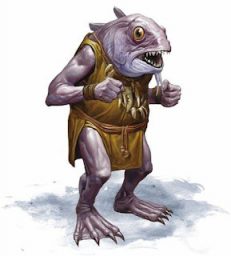 the title: The eponymous Kuo-Toa. The ancient Kuo-Toa People once inhabited the shores and islands of the upper world. As the race of mankind and its associate species grew more and more numerous and powerful, the men-fish were slowly driven to remote regions. [D2 – 13] Ancient, they are also evil. ALIGNMENT: Neutral evil (chaotic tendencies)
the title: The eponymous Kuo-Toa. The ancient Kuo-Toa People once inhabited the shores and islands of the upper world. As the race of mankind and its associate species grew more and more numerous and powerful, the men-fish were slowly driven to remote regions. [D2 – 13] Ancient, they are also evil. ALIGNMENT: Neutral evil (chaotic tendencies)
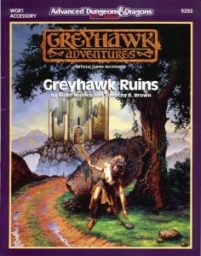 Comic Books (Greyhawk Musings): Long ago, in a fandom far, far away (2006), Scott Casper penned a “fanfiction novella called ‘Castle Greyhawk’ out of his love for the World of Greyhawk, even though his art skills sucked too bad to make a comic stip. You can find his work here.” His words, not mine.
Comic Books (Greyhawk Musings): Long ago, in a fandom far, far away (2006), Scott Casper penned a “fanfiction novella called ‘Castle Greyhawk’ out of his love for the World of Greyhawk, even though his art skills sucked too bad to make a comic stip. You can find his work here.” His words, not mine.
“In 2005 Mike Bridges started making the W.O.G comic strip out of his love for both comics and the World of Greyhawk. You can find his work here.”
Events (Howard Days): St. Patrick’s Day was Bob Howard’s favorite holiday! So, Happy O’Day to you – we hope you’re enjoying your corned beef, cabbage and green beer as you plan for the April 28-29 version of Howard Days! Only six short weeks away! Selecting the various tabs on this page will help you with those plans, as we’ve tried to include as much information as you would want. The schedule is 95% complete, Project Pride is getting Cross Plains ready and Howard Days is on our minds for a cooler springtime presentation!
D&D (DM David): The Shadowdark game by Kelsey Dionne of The Arcane Library bills itself as delivering old school gaming with modernized mechanics. Shadowdark hardly rates as the first game with this approach. Into the Unknown (2019) boasts 5E compatibility combined with old-school mechanisms such as “morale, reaction rolls, random encounters, gold for XP, and henchmen.” Still, with a Kickstarter closing in on a million dollars, Shadowdark stands as an unprecedented success.
Whiskey (Cutty Sark): The original CUTTY SARK Whisky label was designed by James MacBey, a famous Scottish astist and enthusiastic sailor. Named after the legendary three-mast tea clipper, the ship is an integral part of the design. And why is it yellow? If truth be told, that’s a result of a printing error! The paper turned out bright yellow instead of cream and stayed this way throughout the years.
by James MacBey, a famous Scottish astist and enthusiastic sailor. Named after the legendary three-mast tea clipper, the ship is an integral part of the design. And why is it yellow? If truth be told, that’s a result of a printing error! The paper turned out bright yellow instead of cream and stayed this way throughout the years.
 James Bond (MI-6): For many years, a 17-page treatment by writer Alfonse Ruggerio for what could have been Timothy Dalton’s third 007 adventure has been doing the rounds with James Bond scholars. However, the script that is most commonly analysed for ‘Bond 17’, including on this website until recently, is a 1991 draft that added writers William Davies and William Osborne.
James Bond (MI-6): For many years, a 17-page treatment by writer Alfonse Ruggerio for what could have been Timothy Dalton’s third 007 adventure has been doing the rounds with James Bond scholars. However, the script that is most commonly analysed for ‘Bond 17’, including on this website until recently, is a 1991 draft that added writers William Davies and William Osborne.
Fantasy (Goodman Games): One of the most significant figures in the cultural life of Victorian England, William Morris (1834-1896) was everything from a poet, translator, and writer of medievalist fantasy, to a political activist, printer, champion of building preservation, and a renowned innovator in textile manufacturing and interior design. When Lin Carter oversaw the Ballantine Adult Fantasy line (1969-74), he brought many of Morris’ out-of-print fantasies back into print in affordable paperback editions.
cultural life of Victorian England, William Morris (1834-1896) was everything from a poet, translator, and writer of medievalist fantasy, to a political activist, printer, champion of building preservation, and a renowned innovator in textile manufacturing and interior design. When Lin Carter oversaw the Ballantine Adult Fantasy line (1969-74), he brought many of Morris’ out-of-print fantasies back into print in affordable paperback editions.
Cinema (Kairos): The reader reaction to my review of John Wick was overwhelmingly positive. In fact, there were immediate calls for me to review the sequel. But enthusiasm got the better of my mutuals over the weekend, so they posted their own takes on John Wick: Chapter 2. And you know what? They ended up saying pretty much everything I’d planned to say in my review.
Fiction (Frontier Partisans): Jakes was a journeyman writer when he hit HUGE with The Kent Family Chronicles in the mid-1970s, timed fortuitously to take advantage of a spike in interest in heritage around the 1976 Bicentennial. The runaway bestseller status of the chunky, pulpy novels created a 20-year vogue for multi-generational historical family sagas. He followed that up with an equally successful Civil War yarn, North & South.
HUGE with The Kent Family Chronicles in the mid-1970s, timed fortuitously to take advantage of a spike in interest in heritage around the 1976 Bicentennial. The runaway bestseller status of the chunky, pulpy novels created a 20-year vogue for multi-generational historical family sagas. He followed that up with an equally successful Civil War yarn, North & South.
Appendix N (Jeffro’s Space Gaming Blog): After playing AD&D almost constantly for three years, I was almost ready to back off on my claims about integral Appendix N was to understanding the game. After all, the case could be made that game mechanisms such as Braunstein play, timekeeping rules, and 1:10 figure scaling are far more important to anyone looking to master the game. Fortunately, some rather dimwitted people showed up to set me straight on the matter. Consider the following:
Writing (Pulprev): During my early years, I thought that the Sapir-Whorf hypothesis was overblown. Then I wrote Saga of the Swordbreaker. The Sapir-Whorf hypothesis, also known as linguistic relativity, states that the structure of a language influences its speakers’ cognition. A natural corollary is that by switching to a different language, you change the way you think. The most famous example of linguistic theory in fiction is in George Orwell’s 1984.
Tolkien (Goodman Games): Strictly speaking, J.R.R. Tolkien’s The Lord of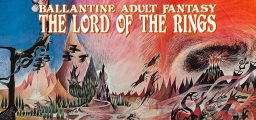 the Rings isn’t actually part of the Ballantine Adult Fantasy series, but it might be fair to say it’s the series’ very foundation. With a rather weird publishing history in the United States, Tolkien’s epic finally got an ‘authorized’ edition of three paperbacks from Ballantine in 1965, along with a reprint of The Hobbit. Already a hit, The Lord of the Rings became an absolute sensation, resonating with mainstream and counter-culture audiences alike. Who doesn’t love a hobbit?
the Rings isn’t actually part of the Ballantine Adult Fantasy series, but it might be fair to say it’s the series’ very foundation. With a rather weird publishing history in the United States, Tolkien’s epic finally got an ‘authorized’ edition of three paperbacks from Ballantine in 1965, along with a reprint of The Hobbit. Already a hit, The Lord of the Rings became an absolute sensation, resonating with mainstream and counter-culture audiences alike. Who doesn’t love a hobbit?
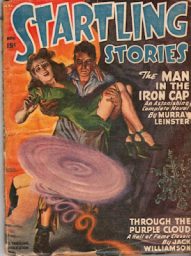 Pulp (Rough Edges): This is a pulp that I own and read recently. That’s my copy in the scan. The cover is by Earle Bergey, a little more sedate than usual and not one of his better ones, but still not bad. Unlike the fans at the time (more about that later), I’m a big fan of Bergey’s work. I’ve been reading stories by Murray Leinster, whose real name was Will F. Jenkins, for more than 50 years.
Pulp (Rough Edges): This is a pulp that I own and read recently. That’s my copy in the scan. The cover is by Earle Bergey, a little more sedate than usual and not one of his better ones, but still not bad. Unlike the fans at the time (more about that later), I’m a big fan of Bergey’s work. I’ve been reading stories by Murray Leinster, whose real name was Will F. Jenkins, for more than 50 years.
New (Arkhaven Comics): My loyal Darklings know that their herald is not given to false or indeed any kind of modesty whatsoever. It is alien to my nature. I’m just not good at it and it’s usually embarrassing for all involved when I try. Painful self assessment is another matter entirely. I can do that just fine. Consequently, when I say that John C. Wright leaves me so far in the dust as a writer that the dust has long settled, been plowed, planted and is now ready for harvest. He is the only living writer that can be compared to Tolkien without me thinking you are retarded for making the comparison.
Science Fiction (M Porcius): 1958’s War with the Gizmos. My copy of the 35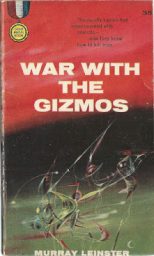 cent Gold Medal edition has a terrific Richard Powers cover with beautiful colors and queer mysterious shapes. The same year it appeared in this form, a version of the novel was published in Satellite Science Fiction as “The Strange Invasion,” which you can read for free at the internet archive.
cent Gold Medal edition has a terrific Richard Powers cover with beautiful colors and queer mysterious shapes. The same year it appeared in this form, a version of the novel was published in Satellite Science Fiction as “The Strange Invasion,” which you can read for free at the internet archive.
Games (Orcus Dorkus RPG Shenanigans): It is finally here and with it comes this highly anticipated unboxing of Hyperborea (Astonishing Swordsmen & Sorcerers of Hyperborea 3rd Edition) as special guest, friend, and fellow Hyperborea enthusiast, Matt Kraft (from our Limited Imperial Edition Dune RPG Unboxing Limited Imperial … ) take a gander at this improved edition and provide some first impression observations while paging through the first book, Volume One: Player’s Manual.
Weird Tales (The Obelisk): A strange yarn appeared out of the gloom in the September 1926 issue of Weird Tales. Penned by a virtually unknown scribbler named H.F. Arnold, “The Night Wire” could be one of the most influential pulp tales that you have never heard of. Emphasis on could. The story is told from the perspective of an unnamed worker living in a port town somewhere between Los Angeles and Seattle. The man’s job involves the news, and his primary task is to compose news bulletins (“wires”) while the rest of the world sleeps. As he says in the beginning.
Science Fiction (Tor): The science fiction world was robbed of a major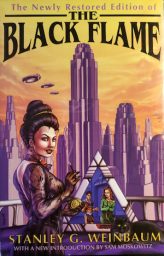 talent when early star Stanley G. Weinbaum died from cancer at the age of only 33. His stories had taken the magazines by storm, and writers like Isaac Asimov and Arthur C. Clarke were quick to sing his praises. One of his rare longer works, The Black Flame, did not appear until after his death, and even then, in a significantly revised form. It was not until 1995 that a copy of the original manuscript was located, allowing Tachyon Books to put it out in the form intended by the author.
talent when early star Stanley G. Weinbaum died from cancer at the age of only 33. His stories had taken the magazines by storm, and writers like Isaac Asimov and Arthur C. Clarke were quick to sing his praises. One of his rare longer works, The Black Flame, did not appear until after his death, and even then, in a significantly revised form. It was not until 1995 that a copy of the original manuscript was located, allowing Tachyon Books to put it out in the form intended by the author.
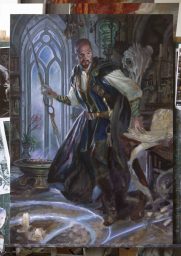 Art (Muddy Colors): A couple of years ago I had the honor of painting the major D&D character, Mordenkainen the Wizard, as a Planeswalker for the Magic:The Gathering expansion: Dungeons and Dragons – Adventures in the Forgotten Realms. While I shared detailed images of the work back then, I realized that I did not also share some of the step by step photos of the work in progress.
Art (Muddy Colors): A couple of years ago I had the honor of painting the major D&D character, Mordenkainen the Wizard, as a Planeswalker for the Magic:The Gathering expansion: Dungeons and Dragons – Adventures in the Forgotten Realms. While I shared detailed images of the work back then, I realized that I did not also share some of the step by step photos of the work in progress.
Comic Books (Tentaclii): Dark Horse has finally dated Gou Tanabe’s “The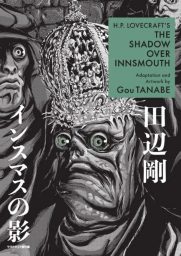 Shadow Over Innsmouth” comics adaptation in its English translation. Though we’ll still have to wait a while, and even then its release will manage to miss the pre-Halloween market. 24th November 2023 is the current date for the $30 single volume. The original from manga master Tanabe was first published in Japanese, concluding there in November 2020.
Shadow Over Innsmouth” comics adaptation in its English translation. Though we’ll still have to wait a while, and even then its release will manage to miss the pre-Halloween market. 24th November 2023 is the current date for the $30 single volume. The original from manga master Tanabe was first published in Japanese, concluding there in November 2020.
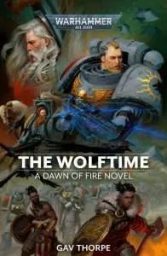 Review (Grim Dark Magazine): In The Wolftime by Gav Thorpe we explore the struggles of the primaris space marines as they try to implant themselves into space marine chapters that have grown and changed for 10,000 years. It’s a book about the outsiders wanting to be insiders, and the insiders not understanding how they could ever be so. The Wolftime is a relatively standard 40K book, packed with action and awesomeness, wrapped around a core question the 40k community has been asking since the announcement of the primaris marines: “how are these primaris marines going to fit in with the lore of the established space marine chapters?”
Review (Grim Dark Magazine): In The Wolftime by Gav Thorpe we explore the struggles of the primaris space marines as they try to implant themselves into space marine chapters that have grown and changed for 10,000 years. It’s a book about the outsiders wanting to be insiders, and the insiders not understanding how they could ever be so. The Wolftime is a relatively standard 40K book, packed with action and awesomeness, wrapped around a core question the 40k community has been asking since the announcement of the primaris marines: “how are these primaris marines going to fit in with the lore of the established space marine chapters?”
Pulp (Fantasy Literature): I can’t imagine any reader who, having turned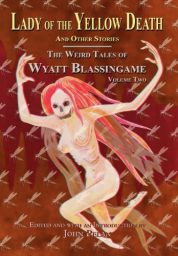 over the final page of the 2010 Ramble House offering entitled The Tongueless Horror and Other Stories: The Weird Tales of Wyatt Blassingame, Volume One, was not compelled to proceed on to Volume Two. That first volume had given us seven tales concerning inbred and homicidal swamp-dwelling junkies, a tongue-slashing serial killer, a swamp-dwelling spider woman, the vengeful ghost of a British seaman, a white slavery racket, college mutants, and a Chinese curse; really, who could possibly resist signing up for more? Not me, that’s for sure! Thus, the second volume in a series that, to date, has extended to four books: Lady of the Yellow Death and Other Stories: The Weird Tales of Wyatt Blassingame, Volume Two, which Ramble House released in 2011.
over the final page of the 2010 Ramble House offering entitled The Tongueless Horror and Other Stories: The Weird Tales of Wyatt Blassingame, Volume One, was not compelled to proceed on to Volume Two. That first volume had given us seven tales concerning inbred and homicidal swamp-dwelling junkies, a tongue-slashing serial killer, a swamp-dwelling spider woman, the vengeful ghost of a British seaman, a white slavery racket, college mutants, and a Chinese curse; really, who could possibly resist signing up for more? Not me, that’s for sure! Thus, the second volume in a series that, to date, has extended to four books: Lady of the Yellow Death and Other Stories: The Weird Tales of Wyatt Blassingame, Volume Two, which Ramble House released in 2011.
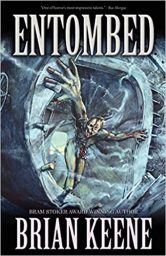 Horror (Lord Samper Library): For me, picking up one of Keene’s books is like meeting up with an old friend again and hanging out for a bit. I know what I’m in for and I know I’ll enjoy it so, here I am again. It had been a long time since I last read ‘Entombed’ so I figured it was well overdue a re-read and my girls were out with their Mum so I settled down for a read and…It has been several months since the disease known as Hamelin’s Revenge decimated the world. Civilization has collapsed and the dead far outnumber the living. The survivors seek refuge from the roaming zombie hordes, but one-by-one, those shelters are falling.
Horror (Lord Samper Library): For me, picking up one of Keene’s books is like meeting up with an old friend again and hanging out for a bit. I know what I’m in for and I know I’ll enjoy it so, here I am again. It had been a long time since I last read ‘Entombed’ so I figured it was well overdue a re-read and my girls were out with their Mum so I settled down for a read and…It has been several months since the disease known as Hamelin’s Revenge decimated the world. Civilization has collapsed and the dead far outnumber the living. The survivors seek refuge from the roaming zombie hordes, but one-by-one, those shelters are falling.
Pulp (Pulp Super-Fan): Another nice book from the Popular Press is East of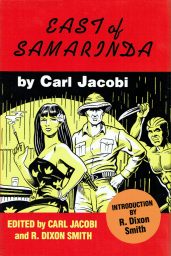 Samarinda, a collection of Carl Jacobi‘s pulp stories. This is one of the rare single-author collections they did, and it follows on from the biography of Jacobi written by R. Dixon Smith, who helped edit this volume with Jacobi himself.
Samarinda, a collection of Carl Jacobi‘s pulp stories. This is one of the rare single-author collections they did, and it follows on from the biography of Jacobi written by R. Dixon Smith, who helped edit this volume with Jacobi himself.
Cinema (Collection Reviewed): The first of seven  Westerns Boetticher made with Randolph Scott. As much as I love most of them (The Tall T and Ride Lonesome are two of the best Westerns), 7 Men from Now is a disappointment on rewatching. Scott is great as a man hunting the seven men responsible for his wife’s death. Lee Marvin is very good as a man of unclear loyalties. As is true of all these movies, it’s tight and economical, but unlike the others, it’s saddled with a soggy love story and a poor score. The ending is soft and detracts from the hardness the film otherwise strives for.
Westerns Boetticher made with Randolph Scott. As much as I love most of them (The Tall T and Ride Lonesome are two of the best Westerns), 7 Men from Now is a disappointment on rewatching. Scott is great as a man hunting the seven men responsible for his wife’s death. Lee Marvin is very good as a man of unclear loyalties. As is true of all these movies, it’s tight and economical, but unlike the others, it’s saddled with a soggy love story and a poor score. The ending is soft and detracts from the hardness the film otherwise strives for.
I’ve ordered Chuck Dixon’s Conan. Here’s to a Conan revival!
I didn’t note any prices. Is the Hyborian Age a TPB? How much?